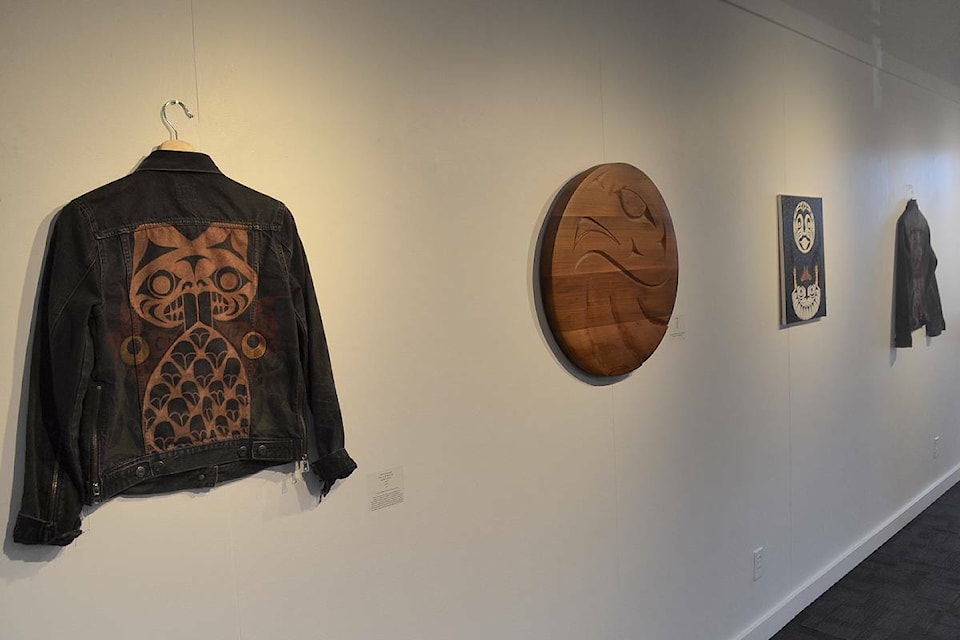Two Indigenous artist aim to challenge the definition of what Indigenous art is and can be.
Mathew Andreatta and Jesse Recalma, both of the Qualicum and Musqueam First Nations, have curated an expansive exhibit for The Old School House (TOSH) Arts Centre in Qualicum Beach, that includes several of their own as well as familial pieces.
The exhibit, Ems Syiyum, will show at TOSH until April 30, and showcases a variety of designs carved and painted onto (but not limited to) hide drums, canvases, cedar chests and even jean jackets.
To both Andreatta and Recalma, being able to hold space and display Indigenous artwork in an Arts Centre is integral in recognizing its importance and how it is perceived.
Recalma said this is one of the first times, that he is aware of, where artists of their community have been invited to participate in such an exhibit.
“We’ve always had artists in the community, but this is to showcase some of our ‘up and coming’ artists for ourselves. And our family to be able to hold space in town. And it’s something that’s starting to grow more and certainly have more presence than we’ve had before,” he said.
Andreatta said because most of their relatives’ pieces are quite old, they wanted to include and share the space with them as well.
“For myself, that’s a lot of who I looked at and learned from. But from my knowledge, they didn’t have the opportunity to be exhibited – to be taken in and acknowledged and recognized as art at this level,” he said.
READ MORE: PQBeat: Talking 2022 plans with Illana Hester of TOSH in Qualicum Beach
“So to have the opportunity to show that the responsibility of being an artist in our community is hopefully in good hands,” he added with a chuckle.
In Ems Syiyum, both Recalma and Andreatta aim to challenge what Indigenous art is, and more importantly, how it is perceived.
“Something that we’ve come across as Coast Salish artists is that we often get the definition of ‘form-line artists’ as a tag off the bat, just because it’s Indigenous art,” said Recalma. “Quite a few other Coast Salish artists, and other artists as well, have really tried to steer away from that definition of form-line, even though it does have a bit of relation to it… But when you look at a lot more contemporary Coast Salish artists, the form-line definition doesn’t quite fit the full style of the art in the same way.”
Andreatta agreed, and added that inspiration and expectation are both present in their own pieces.
“Even though the use of ‘trigons’ (a common shape found in form-line art) are used – I’ll use them now and then – but that’s almost just because other people won’t know otherwise,” he said with a chuckle.
“But it doesn’t always accurately represent what we’re doing. It’s a different definition – it’s from a different box… A lot of people when they’re expecting what their concept of Indigenous art is, is so often tied tightly with traditional rigid forms of form-line that weren’t geographically accurate, necessarily, to where Qualicum is… I think it’s an interesting conversation that has been coming up with our show.”
The Ems Syiyum exhibit at TOSH includes pieces by Grace Edwards, of Snaw-Naw-As (Nanoose) First Nation, Carrie Reid (Recalma’s mother), Alec ‘Tonto’ Peters (Recalma’s and Andreatta’s great uncle from the Musqueam band), Martha Recalma (Recalma’s and Andreatta’s great grandmother), Gordon Reid (Recalma’s grandfather) and Lux Recalma (Recalma’s and Andreatta’s great uncle).
